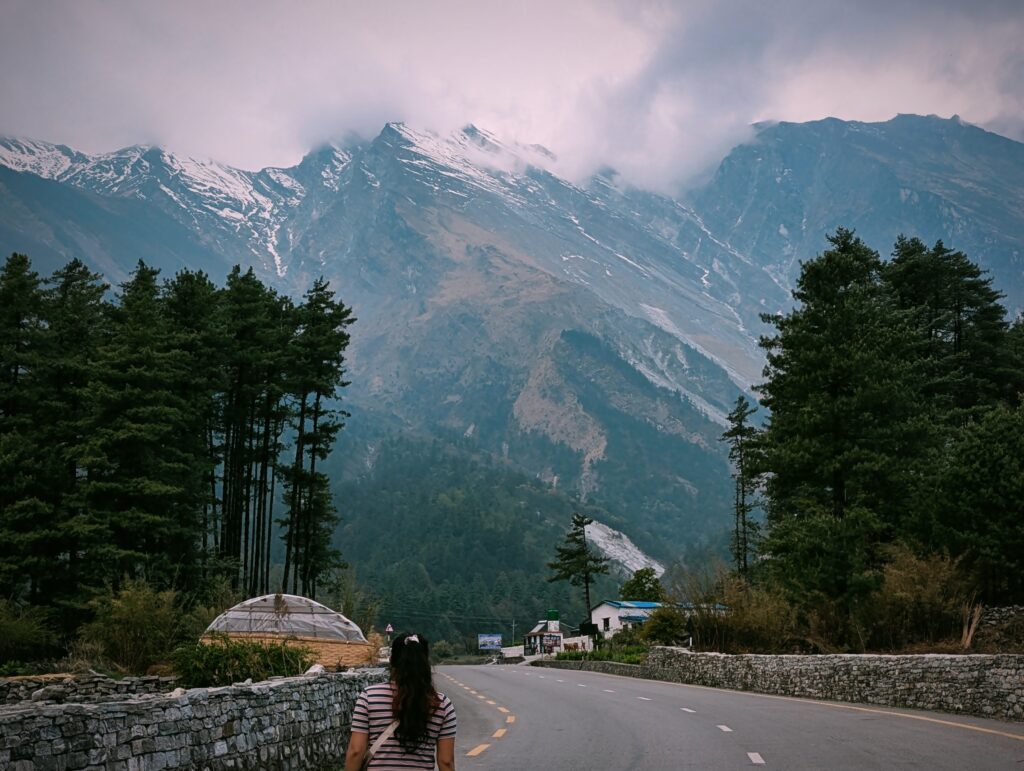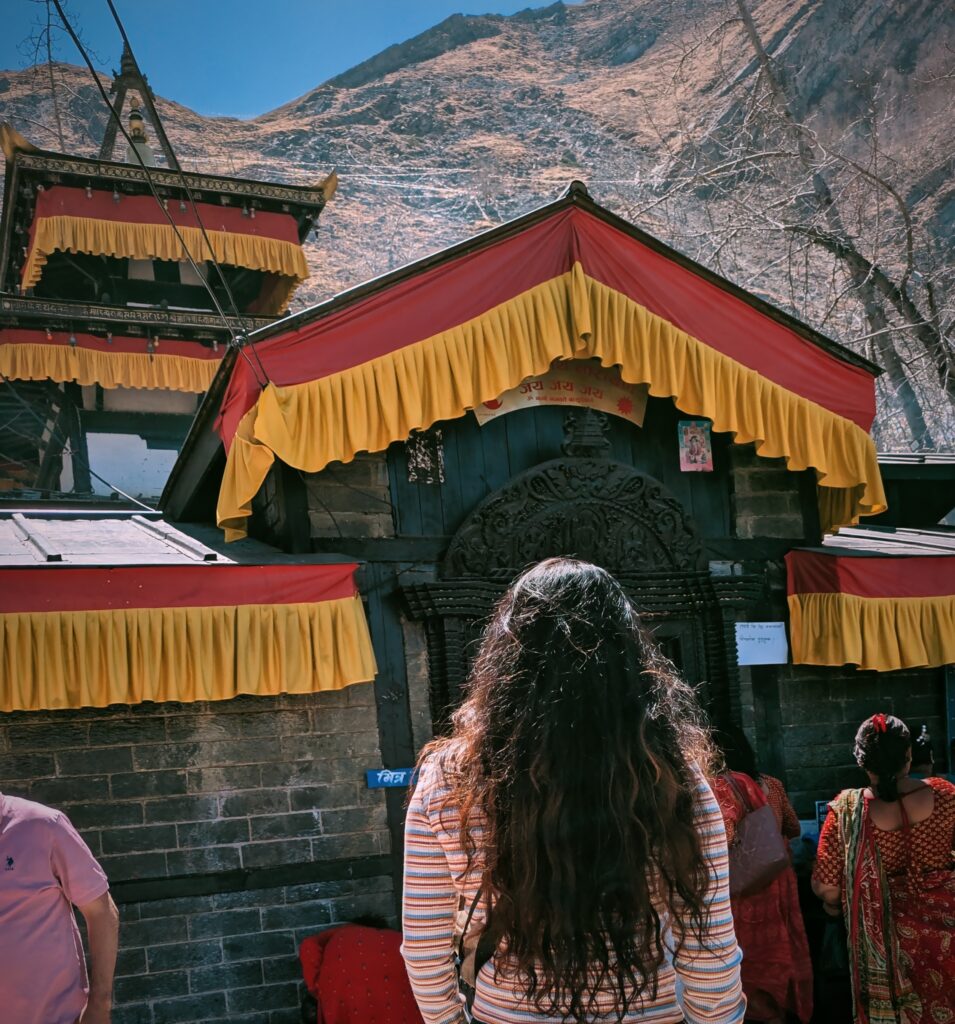Muktinath Temple Travel Guide: A Spiritual Journey to the Himalayas begins in the rain shadow of the Annapurna and Dhaulagiri ranges, where the revered Muktinath Temple stands as a sacred pilgrimage site. This temple, sacred to both Hindus and Buddhists, draws thousands each year seeking spiritual renewal on their journey through the Himalayas.
📍 Where is Muktinath Temple?
📍 Location: Muktinath Valley, Mustang District, Gandaki Province, Nepal
🏔 Altitude: 3,800 meters (12,467 feet) above sea level
🌍 Coordinates: 28.8166° N, 83.8704° E
Muktinath Temple is located near the Thorong-La mountain pass, along the Annapurna Circuit trekking route (link to your Annapurna post), in the Trans-Himalayan region of Nepal.
🛕 The Meaning of “Muktinath”
The name “Muktinath” comes from two Sanskrit words:
Mukti = Liberation or Salvation
Nath = God or Master
Together, Muktinath means “God of Liberation”—a place where devotees believe they can be released from the cycle of birth and rebirth (moksha).
🙏 Why Visit Muktinath Temple?
-
Spiritual Importance: Known as “Mukti Kshetra” (the place of liberation), Muktinath is one of the 108 Divya Desams for Vaishnavites and holds equal reverence in Tibetan Buddhism as Chumig Gyatsa (Hundred Waters).
-
Sacred Elements: The temple features 108 water spouts and eternal flame (Jwala Mai), symbolizing the union of Earth, Fire, and Water.
-
Pilgrimage Destination: Hindu sages, Buddhist monks, and global travelers frequent this temple to seek blessings, purification, and peace.
🔱 Religious and Spiritual Significance of Muktinath Temple
1. In Hinduism
- Muktinath Temple is one of the 108 Divya Desams, sacred temples of Vishnu mentioned in ancient Tamil texts by Alvar saints (learn more).
It is also considered a Shakti Peetha—a sacred space where parts of Goddess Sati fell to Earth.
The temple is especially important for Vaishnavites (devotees of Vishnu) and often forms part of the Char Dham Yatra of Nepal.
Pilgrims perform a ritual bathing under the 108 ice-cold water spouts (called Muktidhara) and take a dip in two holy ponds (Mukti Kunda) to cleanse sins and bad karma.
2. In Buddhism
Known to Buddhists as Chumig Gyatsa, meaning “Hundred Waters” in Tibetan.
Believed to be a place blessed by Padmasambhava (Guru Rinpoche) in the 8th century (more on Padmasambhava).
It’s considered one of the 24 Tantric places (places of spiritual power).
A large Buddhist stupa sits just outside the temple grounds, showing the harmony between Hinduism and Buddhism in Nepal.
📜 Historical Background
The Vishnu idol in the temple is made of gold and has been worshipped for centuries.
Though the current temple structure is relatively modest, the religious history of the site dates back thousands of years.
Historical texts suggest that Buddhist nuns manage the temple’s daily rituals, further illustrating the shared spiritual stewardship.
🔱 Spiritual Highlights of Muktinath Temple
💧 The 108 Water Spouts (Muktidhara)
One of the most sacred features of Muktinath Temple is the 108 stone water spouts, arranged in an arched semi-circle behind the main shrine. These spouts are shaped like bull heads, and ice-cold water from nearby glaciers flows continuously through them.
-
Spiritual Significance: Bathing under all 108 spouts is believed to cleanse sins and negative karma, paving the path to moksha (liberation). The number 108 holds deep symbolic meaning in Hinduism, Buddhism, and even yoga—representing the wholeness of existence.
💡 Pilgrims often begin their ritual by bathing under the taps in rapid succession, despite the freezing water—it’s a spiritual and physical test of devotion.
🕊️ The Two Sacred Ponds (Mukti Kunda)
In front of the temple lie two small ponds known as Mukti Kunda, where devotees also bathe before or after using the water spouts.
-
Symbolism: These represent purification of body and soul. One pond is associated with Lord Vishnu (spiritual liberation), and the other with Goddess Lakshmi (material well-being).
🌿 Hindus believe that bathing here not only purifies this life’s sins but also helps free the soul from the cycle of birth and death.
🪔 Typical Rituals and Practices
Visitors to Muktinath often follow a pattern of rituals:
- Bathing in the 108 Water Spouts – Symbolizing purification and the washing away of sins.
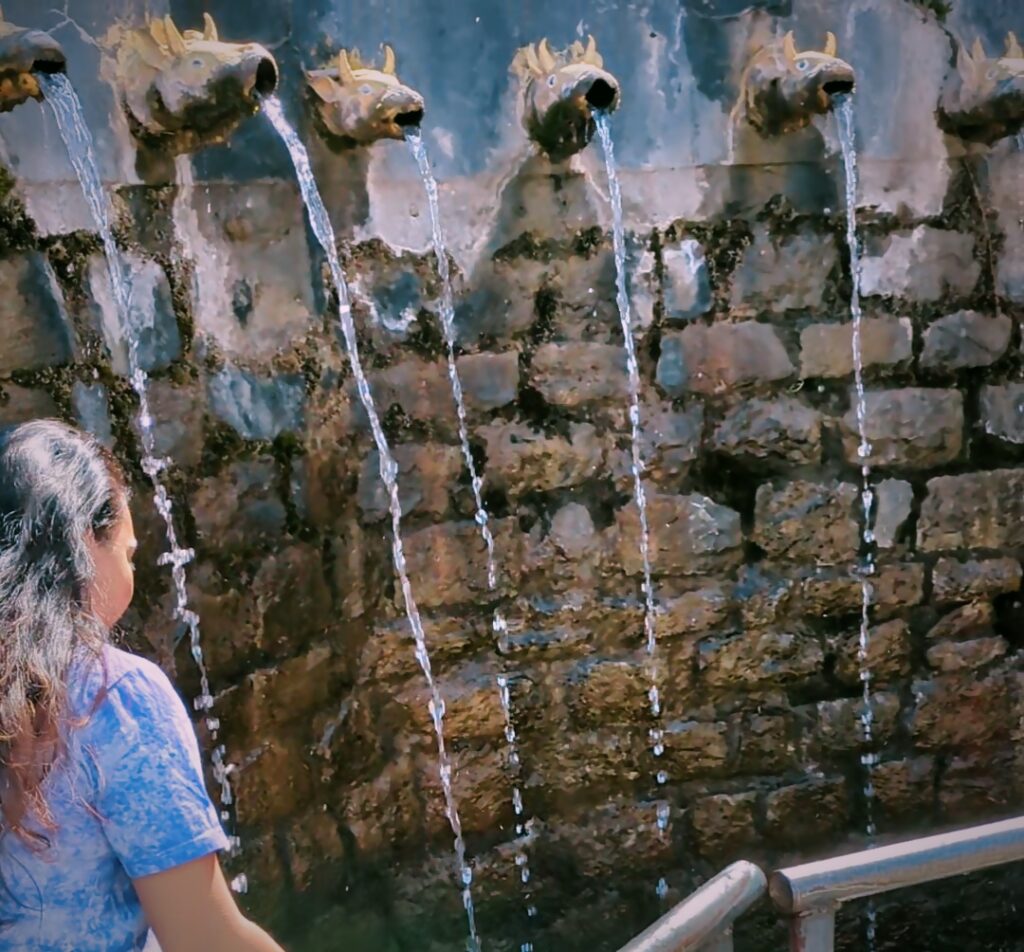
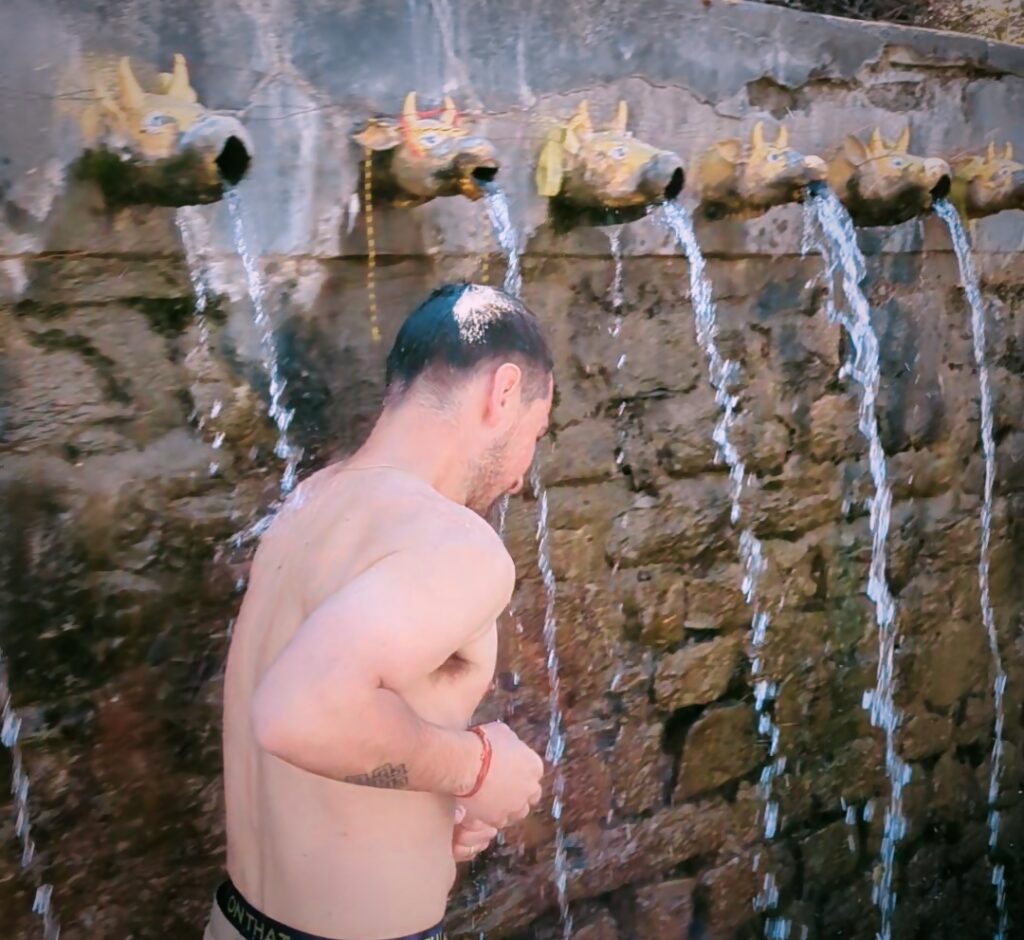
2. Dipping in the Two Sacred Ponds – Known as Mukti Kunda, pilgrims take a cold plunge for spiritual renewal.
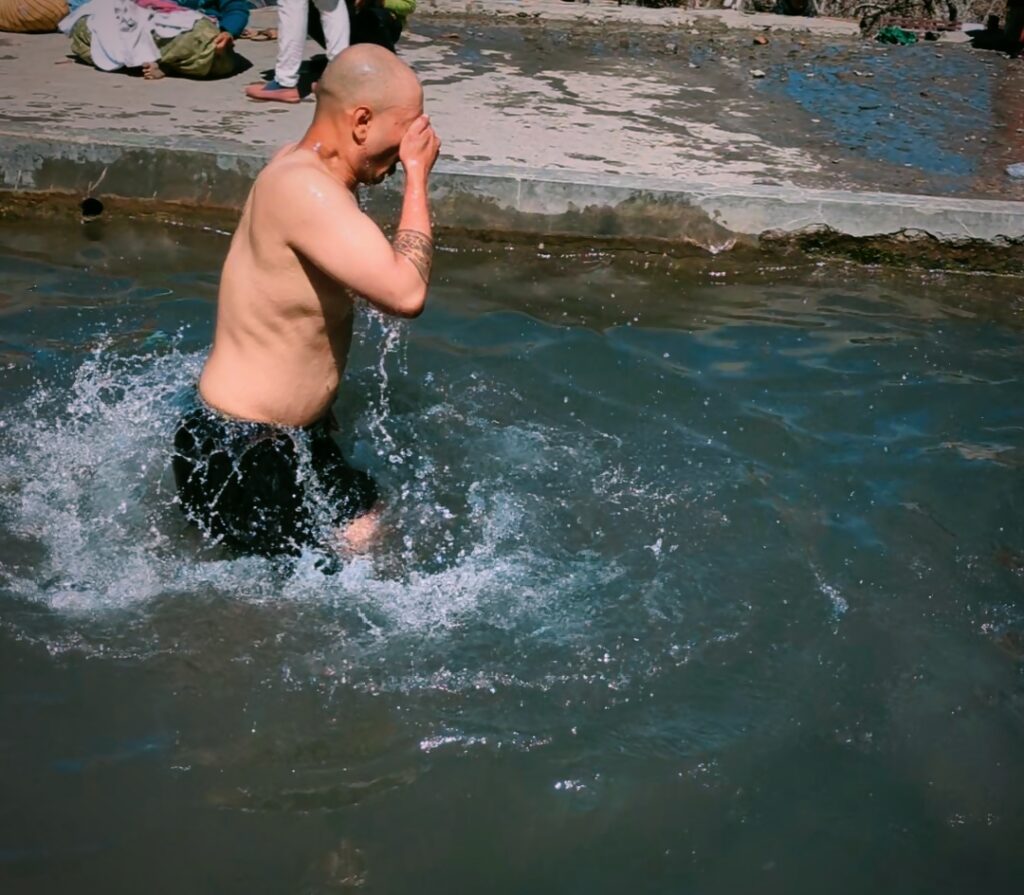
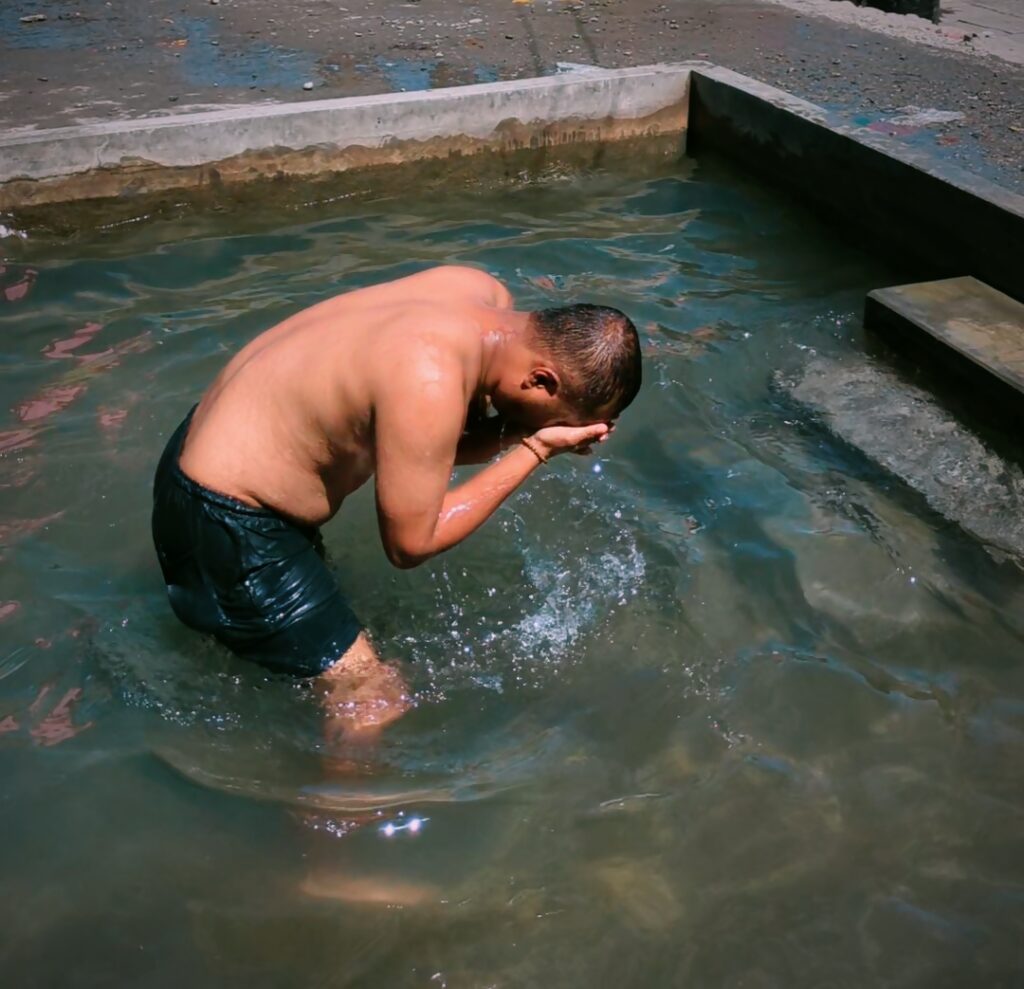
3. Worship at the Main Shrine – Offering flowers, butter lamps, and prayers at the Vishnu idol.
Taking photos inside the temple is strictly prohibited.
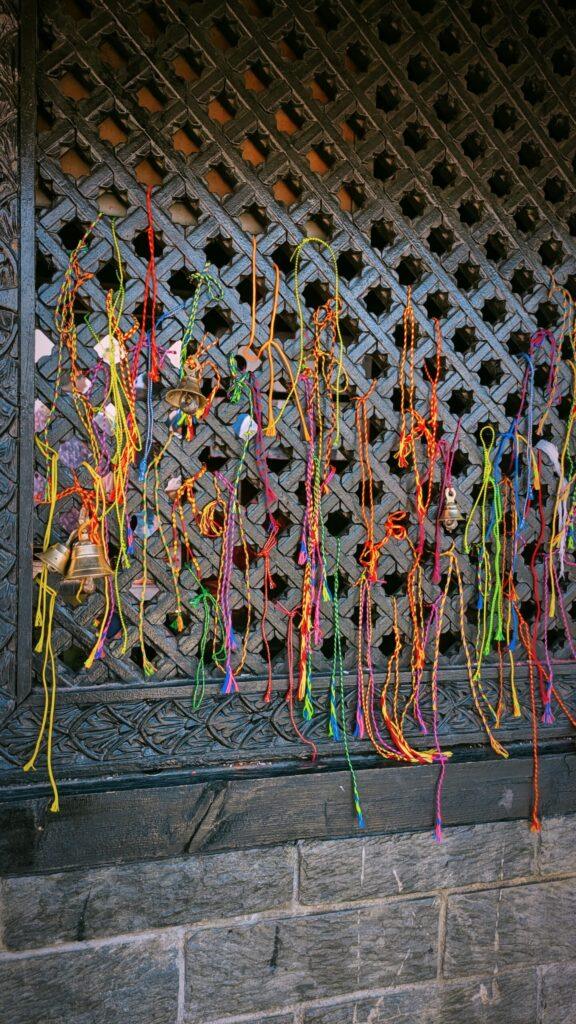
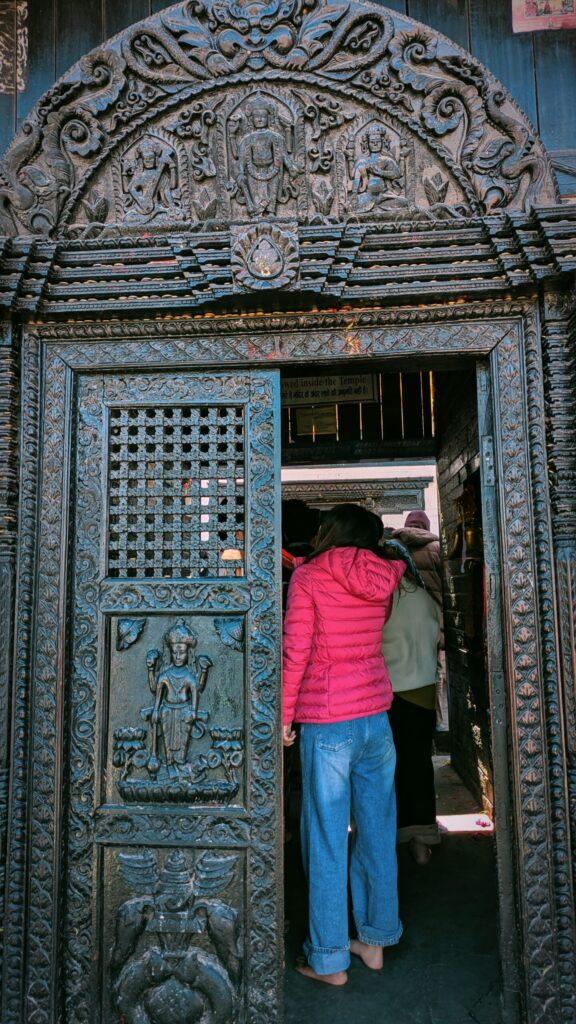
4. Circumambulating the Temple – Following the traditional parikrama path.
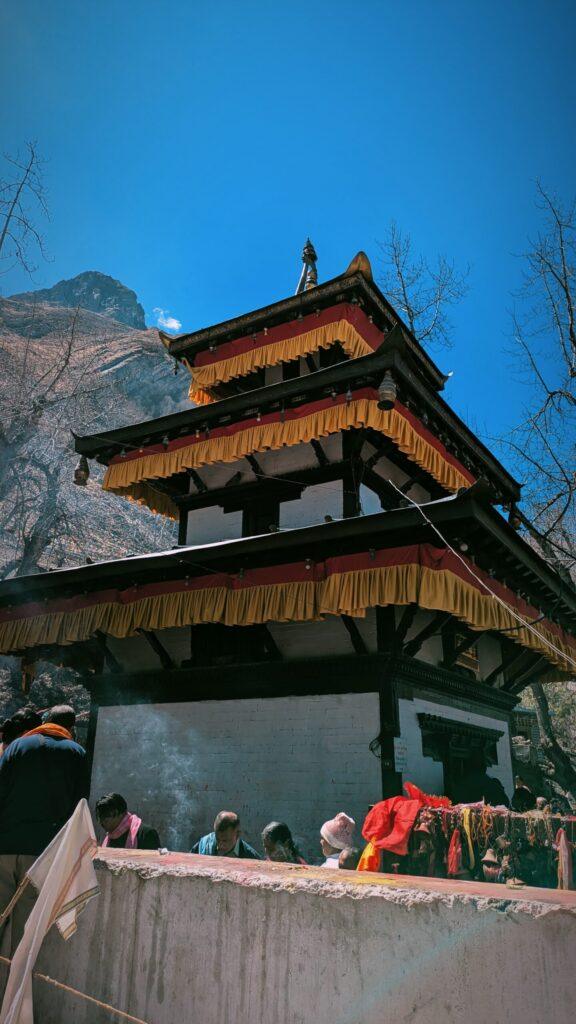
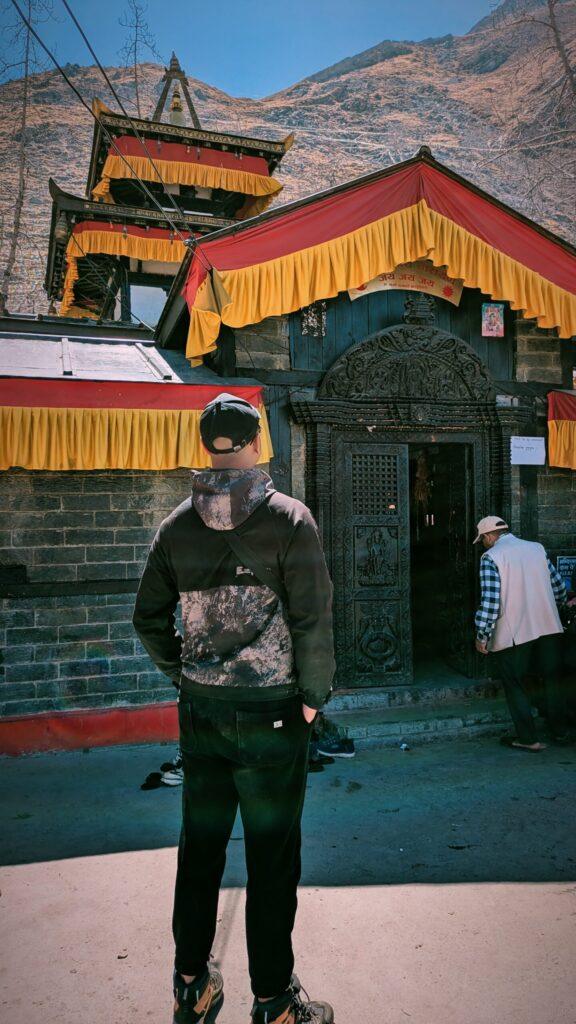
5. Visiting the Buddha Stupa and Other Shrines – Paying respects at nearby Buddhist monuments.
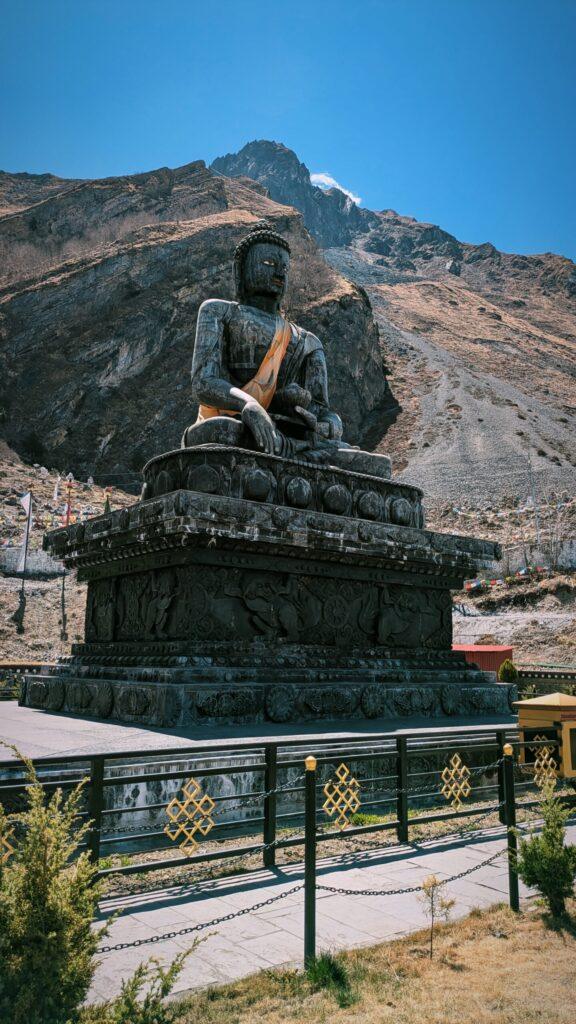
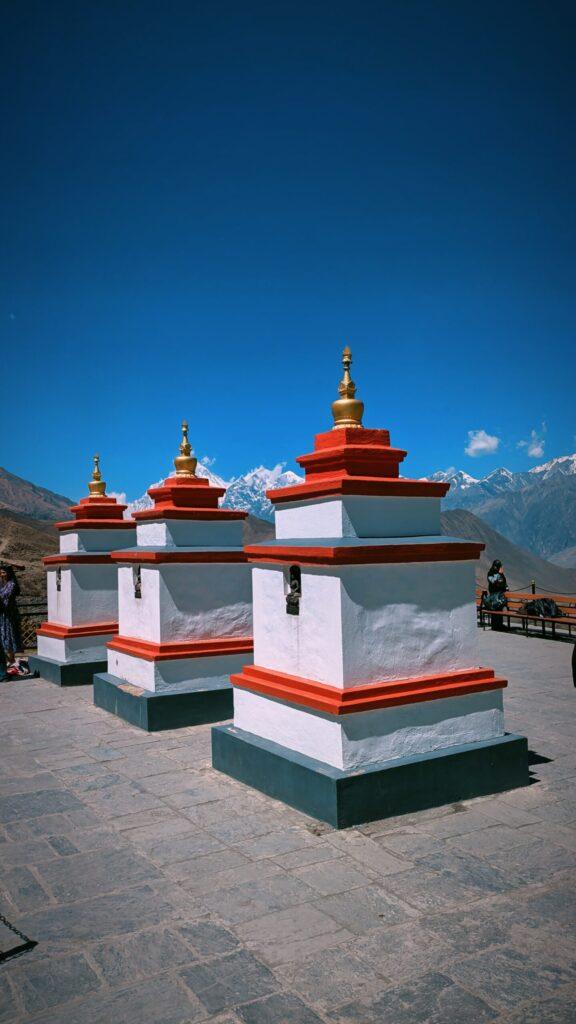
6.Collecting Shaligram Stones (optional) – sacred fossilized ammonites from the Kali Gandaki River (learn about Shaligrams).
Note: Taking photos inside the temple is strictly prohibited.
🕉️ How to Get to Muktinath
There are multiple ways to reach Muktinath, depending on your time and budget:
✈️ By Air:
-
Fly to Pokhara from Kathmandu (25 mins)
-
Then fly to Jomsom (approx. 20 mins)
-
From Jomsom, drive or trek to Muktinath (1.5 to 2 hours by jeep or 6–7 hours trek)
🚌 By Road:
-
Kathmandu to Pokhara: 6–8 hours by bus or car
-
Pokhara to Jomsom: 10–12 hours via off-road journey (preferably in a 4WD vehicle)
🥾 Trekking Route:
-
Ideal for adventure seekers—part of the Annapurna Circuit
-
Trek from Kagbeni or Jomsom, witnessing stark Himalayan beauty and ancient culture
📅 Sample 5-Day Itinerary
Day 1: Kathmandu – Pokhara (Drive or flight)
Day 2: Pokhara – Jomsom – Kagbeni
Day 3: Kagbeni – Muktinath Temple – Back to Jomsom
Day 4: Jomsom – Pokhara
Day 5: Pokhara – Kathmandu
For a detailed look at the itinerary I followed, including all the stops and spiritual highlights along the way, check out my Mustang Trip Postcard: A Spiritual Getaway to Muktinath.
🗓️ Best Time to Visit Muktinath
| Season | Conditions | Notes |
|---|---|---|
| Spring (Mar–May) | Clear skies, pleasant weather | One of the best seasons |
| Autumn (Sep–Nov) | Dry and stable climate | Peak pilgrimage season |
| Winter (Dec–Feb) | Cold, possible snow | Roads may be blocked |
| Monsoon (Jun–Aug) | Rainy and risky landslides | Not recommended for road travel |
📝 Things to Remember
Altitude Sickness: At 3,800 m, take time to acclimatize. Avoid rushing.
Modesty & Respect: Wear appropriate clothing and follow local customs.
No Photography Inside Temple: While photos are fine outside, respect the sanctity inside.
Weather: It can get cold even in summer—bring layers and sun protection.
🛍️ What to Buy in Muktinath & Jomsom
-
Saligrams (Sacred Stones): Fossils believed to be manifestations of Lord Vishnu
-
Tibetan handicrafts: Prayer flags, malas, incense
-
Apple products from Marpha: Cider, dried apples, brandy
-
Yak wool items: Warm, handmade scarves and sweaters
💬 FAQs About Muktinath Temple
Q: Is Muktinath Temple open all year round?
Yes, though access can be difficult during winter and monsoon due to weather conditions.
Q: Is the temple only for Hindus?
No. Hindus, Buddhists, and even non-religious visitors are welcome, provided they are respectful.
Q: Is trekking required to visit Muktinath?
No. You can reach it by jeep or flight + short walk. Trekking is an optional, scenic route.
📌 Conclusion: A Temple Where Paths Converge
Muktinath is not just a temple—it’s a spiritual crossroad. Whether you arrive with prayer beads or a camera, through trek or road, in silence or song, you will leave with something more than you came with. It’s a place of liberation, reflection, and timeless peace, nestled in one of Nepal’s most sacred landscapes.
🪔 Reflections from the Road
“Every bump of the road is worth it when the Himalayas come into view.”
— My Mustang Journal
The roads of Nepal are not always the smoothest, and the journey to Muktinath certainly isn’t for the faint-hearted. But once the first Himalayan ranges begin to appear in the distance, every bump and twist feels incredibly worth it.
Muktinath is more than a sacred destination—it’s a soul-feeding experience. The spirituality, the raw natural beauty, and the warm faces along the way make it a journey that nourishes both the spirit and the senses.
